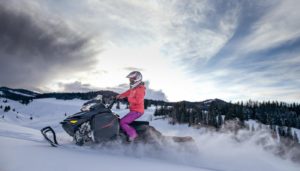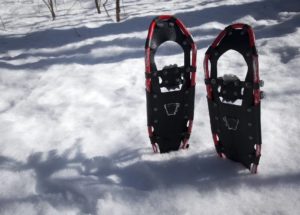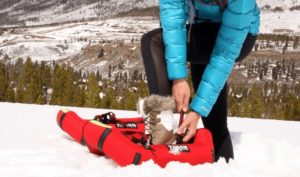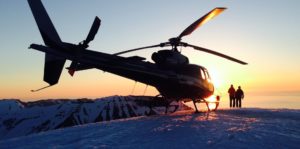While the experts say a large part of avalanche survival is luck, it help to know how to increase your chances if you’re caught in the snow during an avalanche.
It’s tough to even imagine being in an avalanche, let alone imagining how to react. Anyone who spends any time in the backcountry skiing, snowshoeing or snowmobiling needs to know basic avalanche safety skills and how to survive an avalanche.
Recognize the Most Common Avalanche Red Flag
1. Recent Avalanches
If there are new avalanches, more are possible.
2. Signs of unstable snow as you travel
Mother Nature’s Warning Signs:
- Cracking or Collapsing Snowpack
- Whumpfing sounds
- Hollow drum-like sounds on hard snow
3. Heavy Snowfall or Rain in the Past 24 Hours
Significant snowfall or rain can make the snowpack unstable. Avalanches are often triggered the first clear day after a storm. Because it is sunny does not mean it is safe.
4. Significant Warming or Rapidly Increasing Temperatures
Warm temperatures and gravity can cause the snow to creep downhill and become less stable.
5. Persistent Weak Layers
When these are buried in the snowpack, you may trigger an avalanche weeks after a storm or when no other Red Flags are present.
They can be difficult to identify – check the Avalanche Advisory for your area.
Survival Tips During an Avalanche
- Jump upslope. If the avalanche is triggered by human activity, beneath the feet of a skier, snowboarder, etc, jumping upslope is a quick way to potentially get out of the path of the slide
- Move to the edge of the slide. Even if it’s not possible to completely escape the path of the slide, it’s always best to be closer to the edge of the slide rather than the middle, as the slide is more powerful in the middle.
- Stay upright as long as possible. The longer one stays on their feet in a slide, the better chance they have of making it to a safe area.
- Hang onto something. A skier in Canada recently survived an avalanche by hanging onto a tree. The longer a person can avoid being swept into the crush, the better chance they have of surviving, so even if the trees and rocks aren’t sturdy — hang on!
- SWIM! This has been repeated a lot, but according to survivors, it works, though it’s a lot tougher than swimming in water. Any sort of stroke that keeps the head above the snow will work.
- Drop any equipment being carried. If knocked down by an avalanche, ski poles, snowboards and backpacks will only serve to drag a person deeper into the snow.
Survival Tips if Buried in Avalanche
- If it’s impossible to dig out, create an air pocket around the nose and mouth by cupping the hands around mouth. This can buy about 30 minutes of time while waiting for a rescue. It’s important to do this while the snow from the avalanche is slowing down, but still moving.
- Take a deep breath as the snow settles to ensure there is enough breathing room around chest and body, as snow will compact quickly in available space.
- If disoriented, drool a little bit from the mouth. The direction of the saliva will determine which way is up.
- Conserve air and energy. Snow is a sound buffer, so it’s wise to save yelling until people are heard in the area. The odds are a victim will hear rescuers coming before rescuers can hear a victim yelling.
- No one should travel in the backcountry without an avalanche beacon and shovel. If buried, an avalanche beacon could be the only possible way to locate survivors.
Official rescue teams can take precious minutes to arrive, especially in isolated areas. Survivors should immediately begin looking for anyone buried, it may be the only chance of survival.
It cannot be stressed enough that these are only tips and even following them to the letter does not guarantee safety – it only increases the odds of survival.
Reduce the chances of being in an avalanche — check avalanche reports and mountain conditions before setting out and stay out of bounds areas on ski hills. Know the snow and wind conditions of an area and become familiar with the terrain. Learn to understand where the avalanche dangers are.





